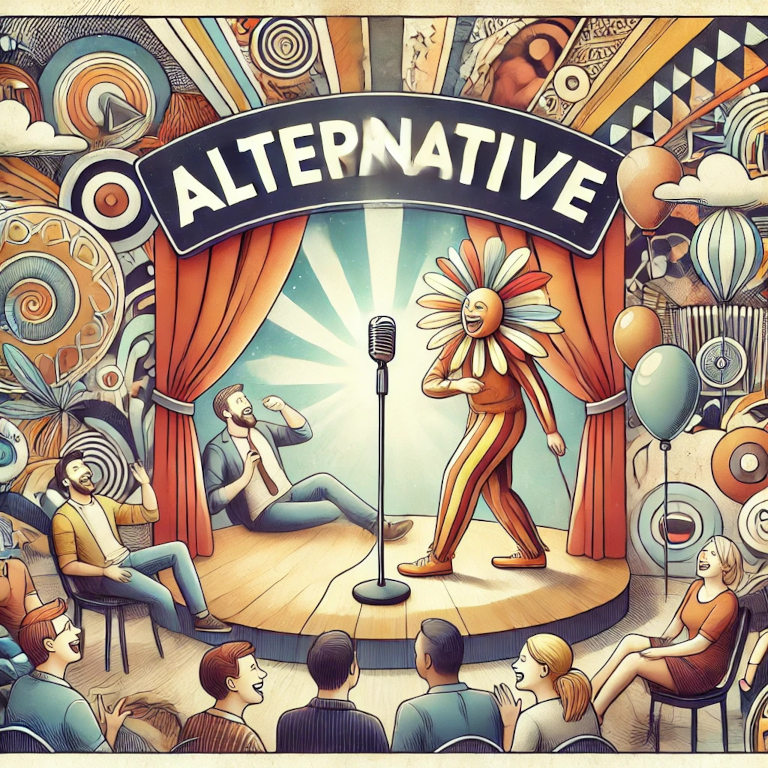Alternative comedy is a genre that has carved out its unique space in the entertainment world, offering a fresh and often unconventional approach to humor. As an expert in Entertainment, I will delve into the essence of alternative comedy, its origins, key characteristics, and notable figures. This comprehensive guide aims to provide a deeper understanding of alternative comedy and highlight its significance in the broader comedy landscape.
Understanding Alternative Comedy
Alternative comedy, sometimes referred to as “alt-comedy,” breaks away from traditional comedic norms, exploring new styles, formats, and themes. It often challenges mainstream comedy’s conventions, providing a platform for more experimental and boundary-pushing humor. This genre embraces a wide range of comedic expressions, from surreal and absurd to politically charged and darkly satirical.
Origins and Evolution
1. Early Beginnings: Alternative comedy emerged in the late 1970s and early 1980s, primarily in the UK and the US. It was a reaction against the mainstream comedy of the time, which was often seen as formulaic and reliant on stereotypes. The movement sought to provide a countercultural voice, emphasizing originality and innovation.
2. Influential Venues: In the UK, the Comedy Store in London played a pivotal role in the development of alternative comedy. Similarly, in the US, venues like The Comedy Store in Los Angeles and clubs in New York’s Greenwich Village became hubs for alternative comedians to showcase their work.
3. Key Figures: Prominent early figures in the alternative comedy scene include Rik Mayall and Adrian Edmondson from the UK, known for their work on “The Young Ones,” and American comedians like Andy Kaufman, who is renowned for his unconventional and often provocative performances.
Key Characteristics of Alternative Comedy
1. Experimental Formats: Alternative comedy often features innovative and experimental formats. This can include breaking the fourth wall, incorporating multimedia elements, or using unconventional performance spaces.
2. Dark and Satirical Themes: Alt-comedy frequently tackles darker, more satirical themes that might be considered taboo or too controversial for mainstream comedy. This can include political satire, social commentary, and explorations of existential themes.
3. Surreal and Absurd Humor: Surreal and absurd humor is a hallmark of alternative comedy. This style often involves bizarre, nonsensical scenarios and characters that challenge conventional logic and expectations.
4. Character-Driven Performances: Many alternative comedians create unique, often outlandish characters that become central to their acts. These characters can serve as vehicles for exploring different comedic styles and themes.
5. Emphasis on Authenticity: Alternative comedy places a strong emphasis on authenticity and personal expression. Comedians often draw on their own experiences and perspectives, presenting material that feels genuine and relatable.
Notable Figures in Alternative Comedy
1. Eddie Izzard: Known for his surreal and stream-of-consciousness style, Eddie Izzard is a prominent figure in the alternative comedy scene. His performances often blend historical references with absurd humor.
2. Maria Bamford: Maria Bamford’s unique brand of comedy includes character-driven performances and candid explorations of mental health. Her work is celebrated for its originality and depth.
3. Tim Minchin: Tim Minchin is a comedian and musician whose work often incorporates satirical and philosophical themes. His performances blend music, comedy, and social commentary.
4. Bo Burnham: Bo Burnham’s innovative approach to comedy includes the use of music, multimedia, and meta-humor. His work often critiques the nature of performance and the entertainment industry itself.
5. Kristen Schaal: Kristen Schaal’s distinctive comedic style combines quirky characters with absurd and often dark humor. She is known for her work in both stand-up comedy and television.
The Impact of Alternative Comedy
1. Broadening the Scope of Comedy: Alternative comedy has significantly broadened the scope of what comedy can be. By challenging traditional formats and themes, it has opened up new possibilities for comedic expression.
2. Influencing Mainstream Comedy: Many elements of alternative comedy have been absorbed into mainstream comedy, influencing the styles and approaches of more conventional comedians and shows.
3. Providing a Platform for Diverse Voices: Alternative comedy has provided a platform for diverse voices and perspectives that might not have found a place in mainstream comedy. This inclusivity has enriched the comedy landscape, making it more varied and representative.
4. Encouraging Innovation: The experimental nature of alternative comedy encourages continuous innovation and creativity. This has led to the development of new comedic techniques and the evolution of the art form.
Summary
Alternative comedy represents a vital and dynamic aspect of the comedy world. With its emphasis on originality, experimentation, and authenticity, it offers a refreshing departure from traditional comedic norms. By understanding the origins, key characteristics, and notable figures of alternative comedy, we can appreciate its significant impact on the broader entertainment landscape. Embrace the unique humor and innovative spirit of alternative comedy to experience a new dimension of laughter and creativity.






